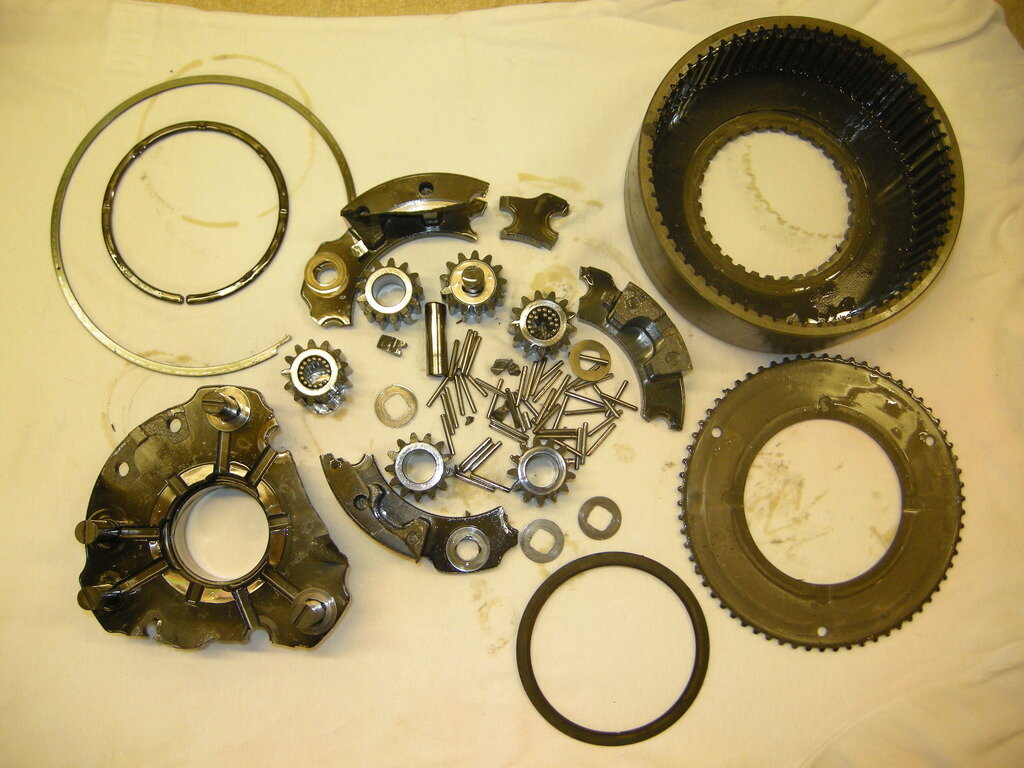I think that is how it should be, i.e the chain is locking front and rear output shafts firmly together so they move as one when power is applied (have I understood that right...Bob Murphy?).
Errrrr not quite.
Its the locked Centre Differential that is making the front and rear prop flanges turn together.
The rear propshaft is driven by the rear half of the main shaft that runs the length of the Transfer Box. This acts as the 'Sun Wheel' in Epicyclic Gear terms.
The drive from the front of the Transfer Box (from the gearbox, via the High/Low Ratio epicyclic cluster at the front) drives the outer drum of the Centre Differential - The Anulus in Epicyclic gear terms. The front and rear sections of the main shaft are separate and run together on a caged roller bearing. This means that the Anulus and Sun wheel can turn independently.
Between the Sun Wheel and Anulus you find the Planet Carrier. This has three pairs of gears, the inner three run on the sun wheel and the outer three run on the inside of the drum (anulus).
Having paired Planet Gears reverses the direction of the drive, thus when the Anulus is turned the Sun Wheel and Planet Carrier try to turn in opposite directions.
The front propshaft is driven by the Planet Carrier.
This is why, when jacking up one side of the car (e.g. both nearside wheels off the ground) with gearbox in gear, The Centre Differential 'open' and handbrake off . . . Turning one wheel results in the other turning in the opposite direction

.
With all road wheels on the ground, the load is split between front and back and when in 'drive' the entire Centre Differential assembly turns as one and both front and rear propshafts turn in the same direction.
When locking the Centre Differential, a sleeve is slid across the gap between the front and rear sections of the main shaft, meaning that the Anulus and Sun Wheel turn as one. The Planet Carrier locks up (as the Planet Gears are in mesh with both - with more teeth in the drum than on the Sun Wheel) so there is no differential action as the Planet Gears reach 'Transmission Wind-Up'.
There will be slack in the Planet Carrier and the Planet Gears whose needle roller bearings can get very worn and thin. Also, there will be some movement between forward and backward rotation as the Planet Gears jam-up - being asked to engage two different ratios at the same time.
Feeling rotational play between the front and rear companion flanges can therefore be caused by a combination of slack in the chain, wear in the Centre Differential Planet Carrier (which is not particularly strong) and a bit of natural movement as the Planet Gears jam-up.
I'm afraid it could be wear in one, the other, or both

.
That was a long way around for a short cut - apologies

.
Bob.


 .
.

 .
.